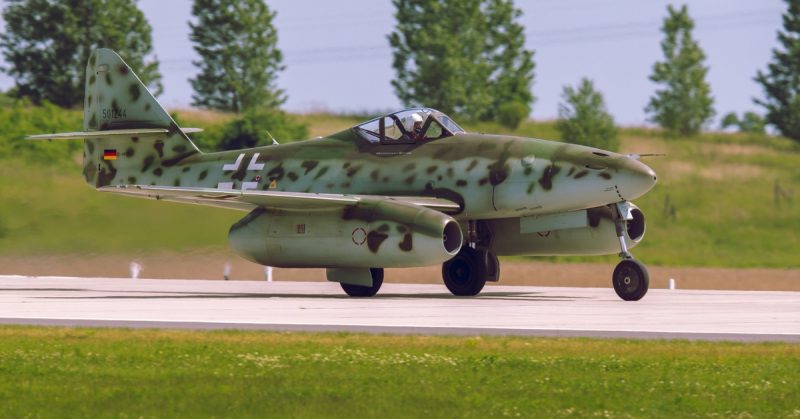During the 1930s and 1940s, Messerschmitt made some of the most advanced and effective fighter planes in German service. They played an important part in the Second World War and in advancing technology in aerial warfare.
Bf109
The most famous German plane of the war, the Bf109, was created using features from a civilian plane, the Bf108. What had previously been used to power a four-seater touring plane now powered a one-seater fighter.
Upon entering service in 1937, the Bf109 soon proved its value. That November, one broke the world speed record for landplanes by flying at 379.38 mph. Bf109s went into action with the Condor Legion, German forces fighting in the Spanish Civil War. This provided pilots and engineers with more experience in operating the plane.
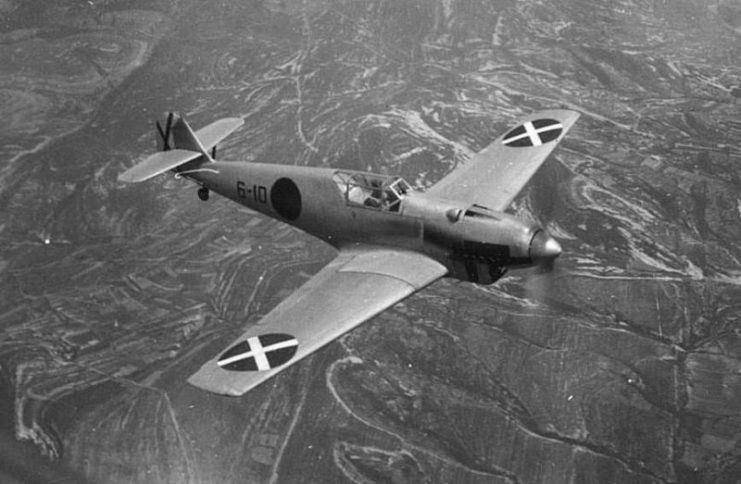
Bf109s were widely used in the early stages of WWII, including the invasions of Poland and France and the Battle of Britain. The model E had a superior engine and weapons to the British planes it initially faced, which gave German pilots an edge in the air and made it infamous among its opponents.
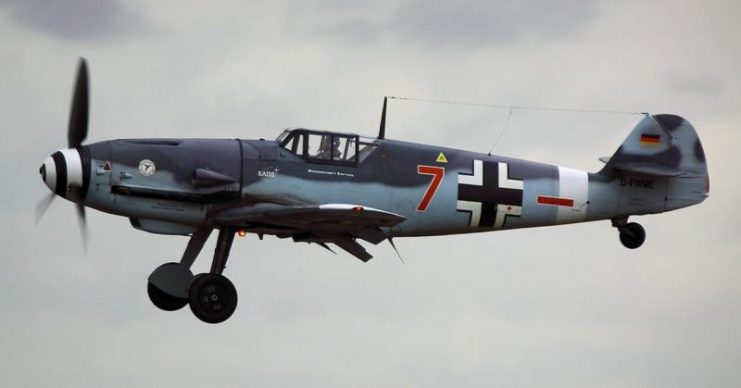
Various models of Bf109 were deployed to fill different roles and counter advances in Allied aircraft. It remained in production after the end of the war thanks to the Czech firm Avia, whose factory survived the war. By the time production ended in the mid-1950s, over 35,000 Bf109s had taken to the skies.
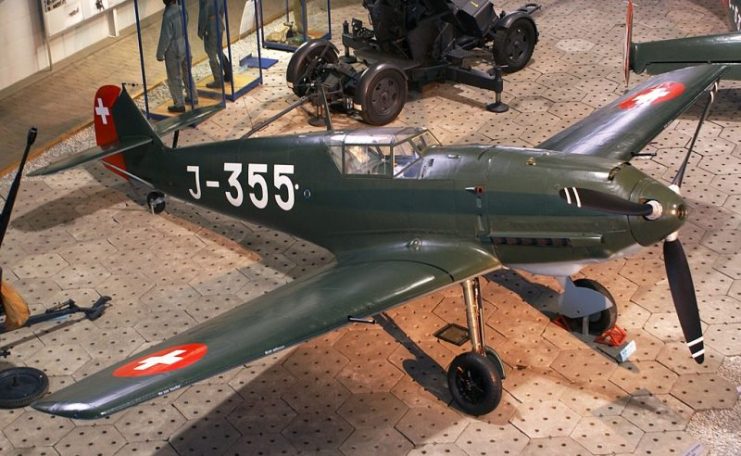
Bf110
Designed around the same time as the Bf109, the Bf110 was a very different beast. Instead of being a dedicated interceptor, it was a combination of heavy fighter and light high-speed bomber. Its range and firepower would allow it to protect heavier bombers during runs into enemy airspace.
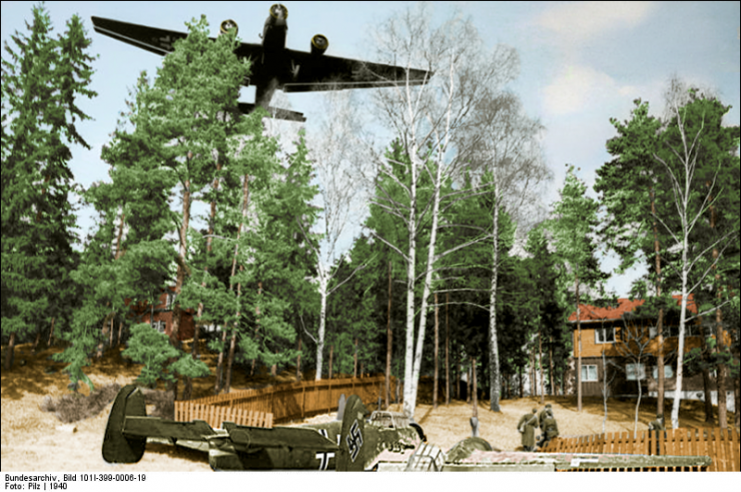
The Bf110 first went into combat during the invasion of Poland in September 1939. In December, Bf110s saw their first use in counter-bomber combat, shooting down 9 out of a flight of 22 RAF Wellingtons.
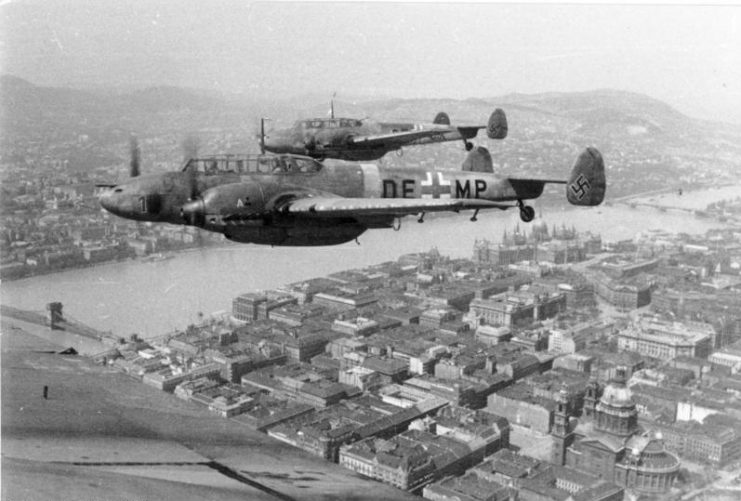
Following its early success, production increased, and 100 Bf110s per month were built in 1940. But the plane had a big problem: its lack of maneuverability made it vulnerable to advanced Allied fighters like the Spitfire and Hurricane.
Due to mounting losses, it was largely withdrawn from daytime service to become a night fighter. Once airborne radar was added, it became a deadly defender of Germany against nighttime raids. Its heavy weapons took down hundreds of Allied bombers. One pilot alone, Major Heinz-Wolfgang Schnaufer, claimed to have achieved 121 kills while flying a Bf110.
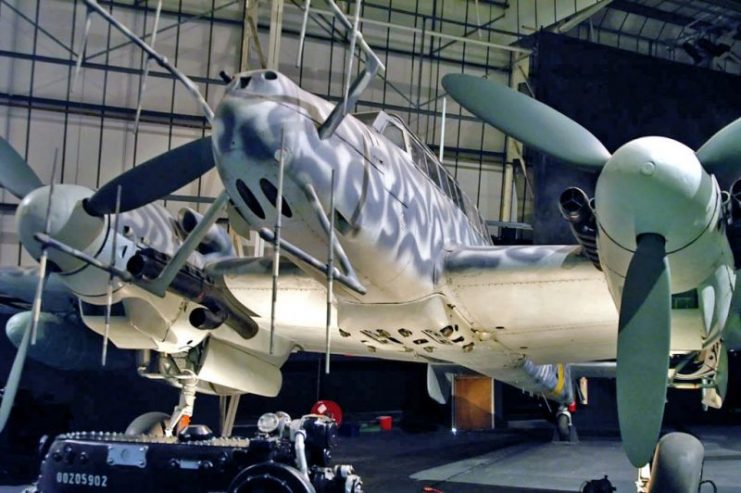
Me410
The achievements of the Bf110 led to the development of a successor, which started out as the Me210. Despite test flights in which it stalled and proved unstable, the Me210 was put into production–only for this to be halted after 200 were built and more Bf110s being made instead.
Rather than abandon the plane, Messerschmitt engineers redesigned it. Renamed the Me410, the new version had a longer fuselage, automatic slats to stop it from stalling, and a more powerful engine.
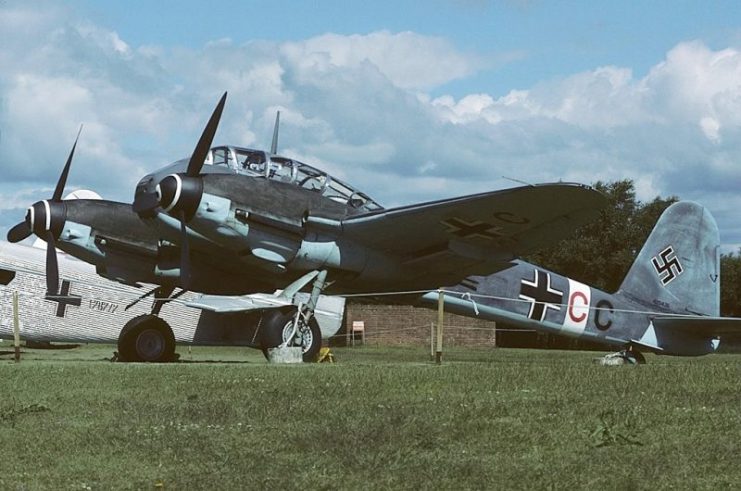
Like the Bf110, the Me410 could be used as a light bomber or heavy fighter. Entering service in January 1943, it was first used in nighttime bombing raids against Great Britain, and then to take out Allied bombers in the Mediterranean.
From early 1944 it was used to defend Germany against nighttime Allied bomber raids. It was also deployed as a night fighter against the Russians, who were now taking the offensive in the east.
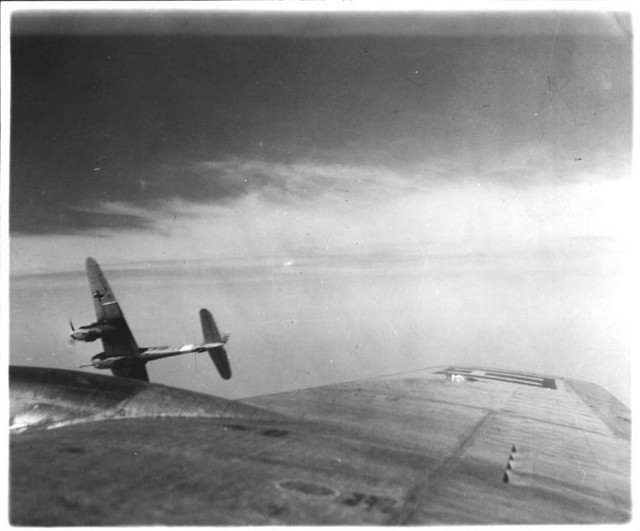
The heaviest weapon carried by an Me410 was the 50mm gun mounted beneath the fuselage of the Me104A-1/U4 model. This was devastating against enemy bombers but also nerve-wracking for the crew using it, thanks to its powerful recoil.
The Me410 was no better than the Bf110 it was meant to replace. Though over a thousand were made, production stopped in September 1944.
Me163
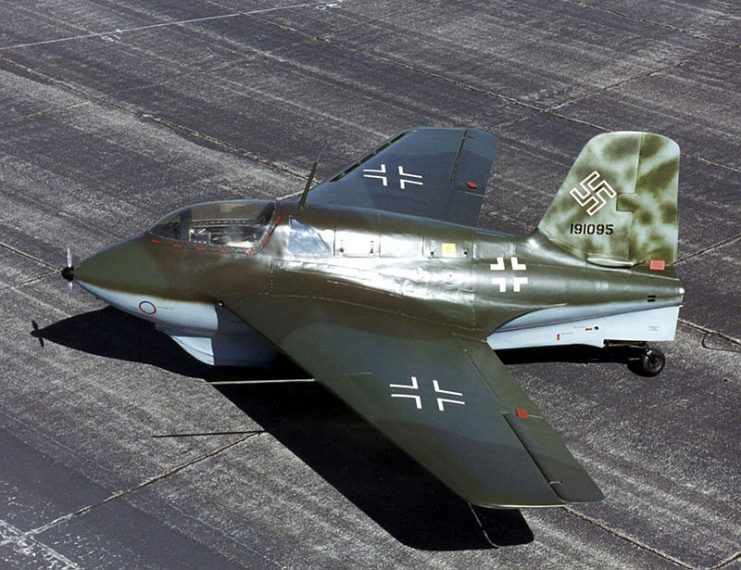
A high-performance rocket-powered plane, the Me163 was a truly radical design. Aside from its powerful high-tech engines, it had an unusual body shape and was one of the first planes to have swept wings. It was sometimes equipped with powerful experimental weapons, such as the SG 500 Jagdfaust, a set of vertical firing tubes triggered by the shadow of a bomber passing over the plane.
When it entered service in July 1944, the Me163 was twice as fast as anything the Allies could field against it. Small and agile, it was terrifying to face. Such high speeds initially proved problematic, as pilots had little time to fire before passing their targets. Swooping attacks from above proved to be the most effective tactic.
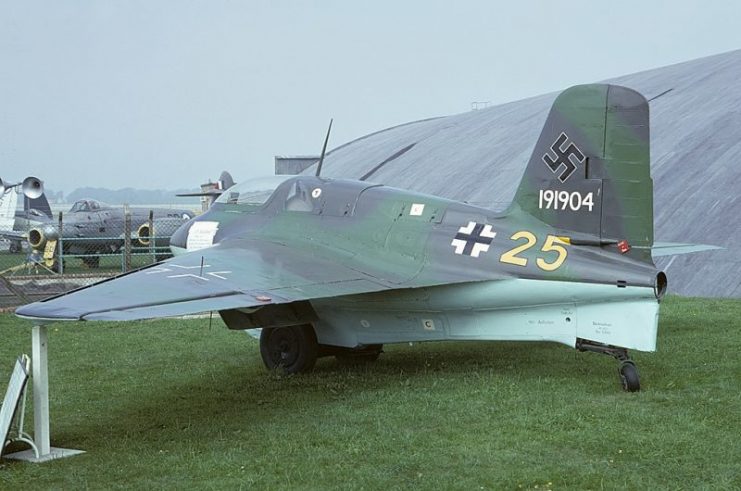
Though its rocket made the Me163 deadly in combat, it could not be fired for long. The volatile fuel ran out after only seven and a half minutes of powered flight, after which the plane glided defenseless back to the ground. It was therefore only effective in a short-range air defense role.
Me262
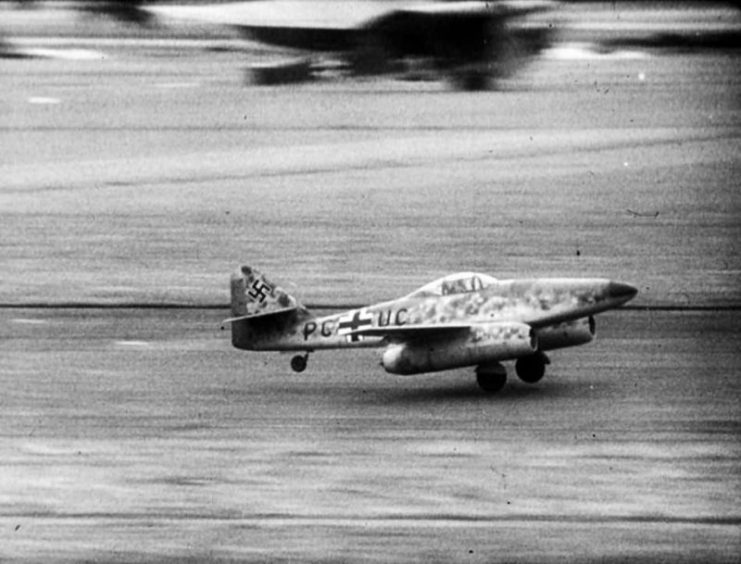
Though the Me163 was interesting, the Me262 was Messerschmitt’s truly groundbreaking plane – the first ever operational jet aircraft.
The Me262’s development was delayed first by the German Command’s focus on proven technology, and then by the intervention of the Allies, who bombed the factories producing it in August 1943. Problems with the performance and reliability of the engines slowed down production, so it was over two years from the first test flight before the plane entered service in July 1944.
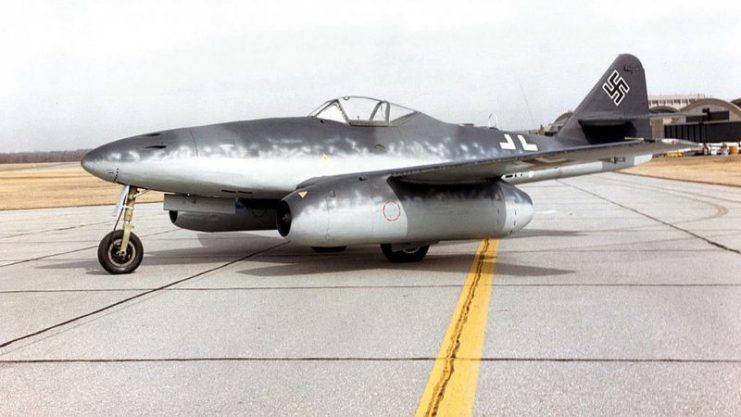
Equipped with 24 rockets and four 30mm cannons, the Me262 was deadly against enemy bombers, but its impact was limited by the difficulties of getting enough of them into the air. Though over 1,400 were made, fewer than 300 went into action. Lack of fuel, spare parts, and trained pilots kept some on the ground. Others were destroyed by Allied bombers before they could take flight.
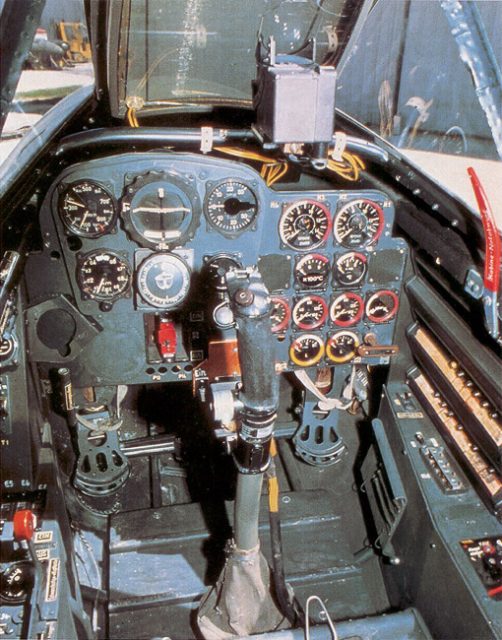
Read another story from us: The Famous Messerschmitt Bf109 – Facts You May Not Know
The Me262 had a limited impact on the Second World War, but a huge effect on the development of military technology. It inspired designers across the world, shaping the design of jet fighters as they became the dominant force in aerial warfare.
